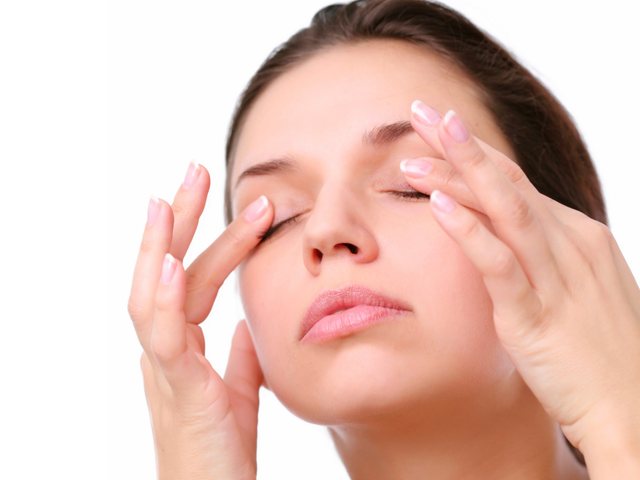Reviewed By:
Are you wondering why you have puffy eyes or how you can make under-eye bags disappear? Good news: Although they can be bothersome, bags under your eyes don’t usually impact vision or health. But if you want to reduce the puffiness around your eyes, there are temporary and long-lasting solutions.
There are several reasons people get puffy eyes, including:
“The most common cause of under-eye bags or puffiness is natural aging,” says Shaun Desai, M.D., a facial plastic and reconstructive surgeon at Johns Hopkins Center for Facial Plastic and Reconstructive Surgery. “Older skin becomes too lax and tends to fall or wrinkle. The muscles and tissues around the eye can also weaken and contribute to the baggy look. This weakening allows the fat surrounding the eye to bulge out, creating that bubble-like appearance.”
There are different approaches to reducing under-eye puffiness, depending on the cause. At-home treatments can temporarily shrink lower lids that are sometimes swollen from fluid pooling in the undereye area.
But, says Desai, home remedies and over-the-counter products can only do so much, “To effectively get rid of under-eye bags that are prominent and permanent, medical treatment is oftentimes necessary.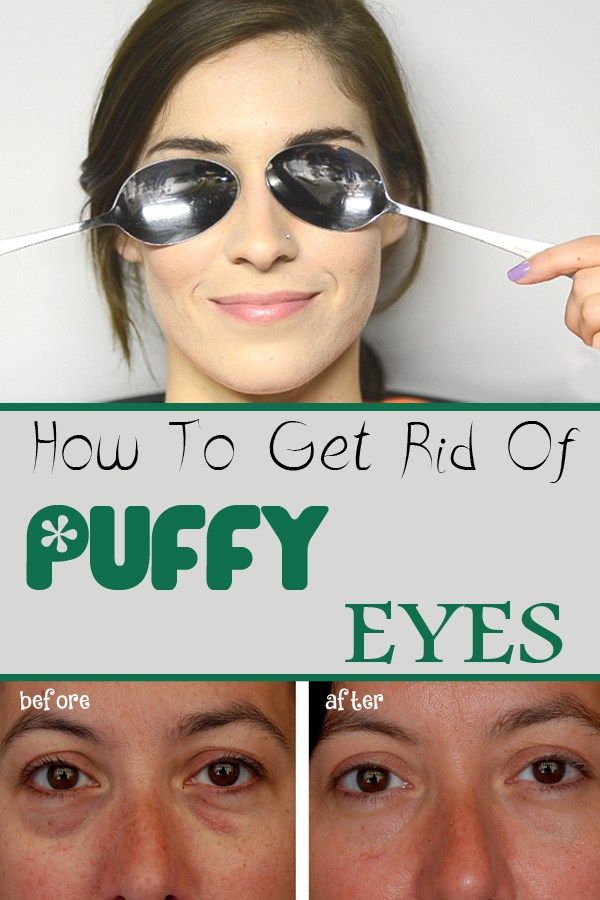 ”
”
If you occasionally wake up with puffy lids, these quick fixes may help. They work to reduce swelling until it naturally subsides over the course of the day.
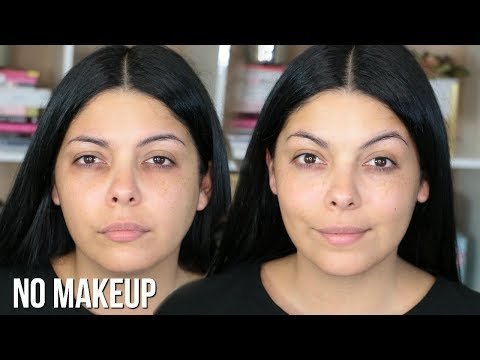 You can also try resting chilled tea bags (caffeinated black tea) on closed eyes.
You can also try resting chilled tea bags (caffeinated black tea) on closed eyes.If you’re fed up with under-eye bags, these medical treatments can improve and even eliminate them:
Nonsurgical options
These noninvasive treatments smooth the under-eye area:
 An in-office application of a chemical solution dissolves old skin cells to reveal tighter, brighter skin. Depending on your skin type and sun exposure, results can last a few years.
An in-office application of a chemical solution dissolves old skin cells to reveal tighter, brighter skin. Depending on your skin type and sun exposure, results can last a few years. Surgical option
A lower eyelid lift (blepharoplasty) is an outpatient procedure where the surgeon readjusts the fat in the lower eye area and tightens the muscle and skin to create a smooth appearance. In most cases, a lower eyelid lift gets rid of under-eye bags for life — it’s rare for people to need future touch-ups.
However, says Desai, sometimes patients require multiple therapies to treat under-eye bags, such as combining laser resurfacing with filler or an eyelid lift.
The eye area is a very delicate part of the face. Serious complications can arise if procedures are done improperly. It’s crucial to find a highly experienced, board-certified surgeon who specializes in treatment of the eyelid area.
We include products we think are useful for our readers. If you buy through links on this page, we may earn a small commission. Here’s our process.
If you buy through links on this page, we may earn a small commission. Here’s our process.
There are many ways to help reduce puffiness around your eyes. Some remedies are simple, like drinking more water. Others are more involved, like getting cosmetic surgery. Here are some tips and tricks to try to get rid of puffy eyes.
Logging a good night’s sleep regularly will help you reduce puffy eyes. Adults need around 7 to 9 hours of sleep a night. To ensure you’re sleeping enough, create a bedtime routine and stick to it.
It’s important to remember that your bedtime routine starts long before you lie down to sleep. To get a good night’s rest, the Mayo Clinic suggests that you should:

Sleep with a few pillows under your head to avoid fluid settling around your eyes. If you’re unable to sleep at an angle on a wedge pillow or a stack of pillows, try raising the head of your bed a bit for the same effect.
Shop for wedge pillows online.
To do this, put a stack of books or another wedge under the feet of your bed on the side where you rest your head. If you notice a difference in how often or severe your eyes puff up, consider a more stable solution, like bed risers.
Shop for bed risers online.
Talk with your doctor if you have year-round or seasonal allergies. Allergies can cause your eyes to redden, swell, and puff up. This may prompt you to rub your eyes more, resulting in further puffiness.
Your doctor can help create a treatment plan to alleviate your symptoms. This may include eye drops and over-the-counter or prescription medications.
Eye puffiness can be the result of dehydration.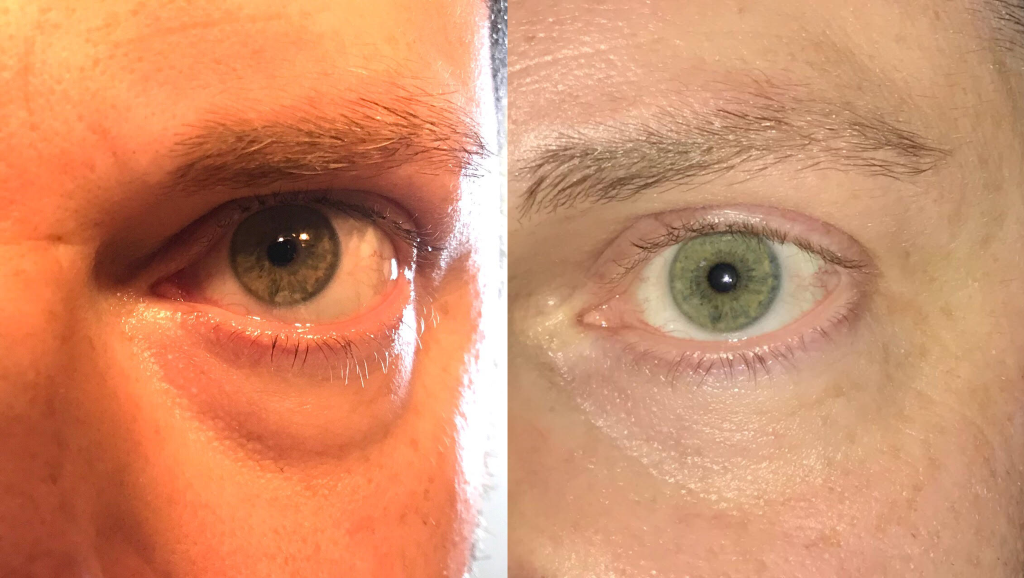 Make sure you drink plenty of water every day to keep your skin healthy. The general rule of thumb is to drink eight 8-ounce glasses of water daily.
Make sure you drink plenty of water every day to keep your skin healthy. The general rule of thumb is to drink eight 8-ounce glasses of water daily.
To stay on track, consider setting an hourly reminder on your phone. You can also use a refillable water bottle marked with specific times to help you drink enough water throughout the day.
Shop for time-marked water bottles online.
Try to limit or avoid alcohol and other drinks that can make you dehydrated. Dehydration can result in puffy eyes, so it may be best to have a glass of water instead.
If you’re tired of plain water, infusing it with fresh fruit is a great way to stay hydrated and refreshed. Try adding your fruit of choice to a water bottle for infused water that lasts all day long.
Shop for personal water bottles online.
Eating too much salt can cause additional fluid retention in your body. It can also lead to other health issues, such as a greater risk of heart problems and stroke.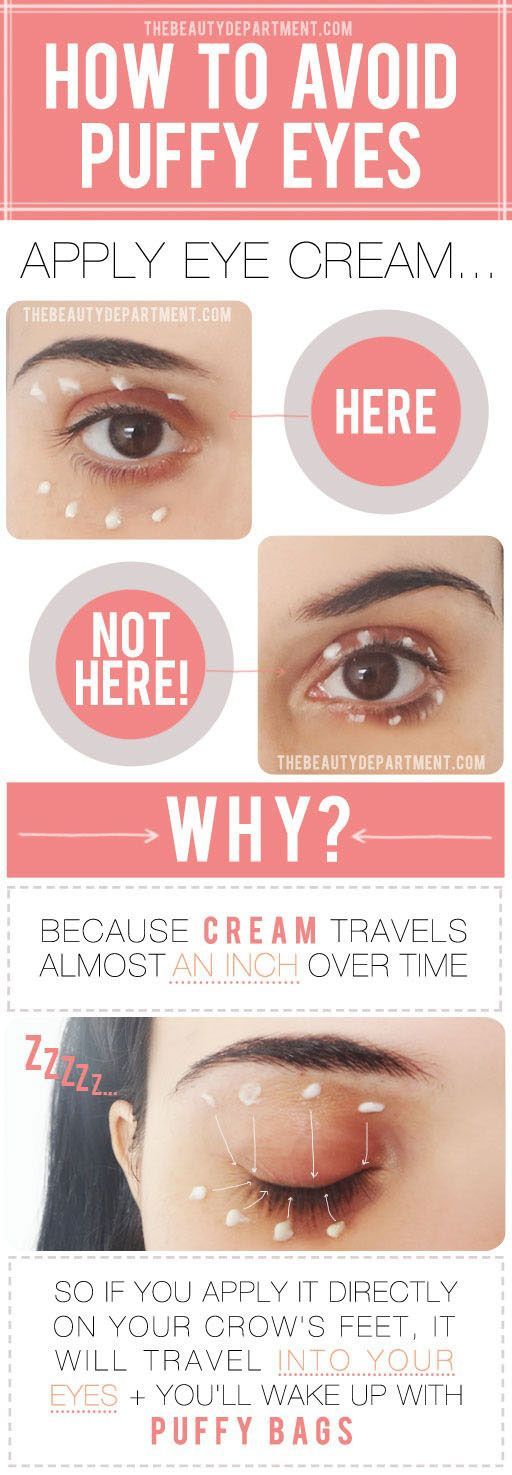
According to the Food and Drug Administration (FDA), the current daily value for sodium is 2,300 milligrams (mg). However, the American Heart Association recommends limiting sodium to 1,500 mg per day.
More than 70 percent of sodium found in American diets comes from processed or restaurant foods. To reduce your salt intake, steer clear of cured meats, cheese, breads, and other processed foods.
Prepackaged foods like instant soups are often high in sodium. Reading labels can help you identify excessive amounts of salt.
Instead, eat more whole foods like fresh vegetables and fruits.
Potassium can help reduce excess fluids in your body, so you may want to ramp up your potassium intake. You can do this by adding bananas, beans, yogurt, and leafy greens to your diet.
If you’re already eating a potassium-rich diet, talk to your doctor about whether your potassium level is fine as-is or if you can safely add a potassium supplement to your daily routine.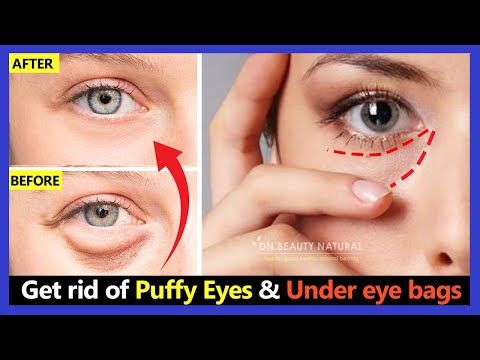
You can reduce eye puffiness by resting a cool washcloth on your eyelids for about 10 minutes. This can help drain excess fluid from under your eyes.
A compress of green or black tea bags may also do the trick. The tea contains antioxidants and caffeine that can reduce inflammation and constrict blood vessels.
There are many eye creams on the market that may relieve puffiness. Some ingredients to look for in an eye cream include chamomile, cucumber, and arnica. These all contain properties that may reduce inflammation and tighten the skin.
Eye creams and makeup with caffeine may also help reduce puffy eyes.
If your eye puffiness is severe, and if lifestyle changes or other remedies don’t work, you may want to consider cosmetic surgery.
One type of surgery is blepharoplasty, which is eyelid surgery. During this procedure, a doctor moves or removes excess fat, muscle, and skin in your eyelid.
Your doctor may also have recommendations for laser treatments, chemical peels, or prescription medications to help serious cases of puffy eyes.
One of the main causes of puffy eyes is aging. The skin under your eyes is very thin, which augments any changes that may occur in your body as you age.
Over time, the tissue in your eyelids can weaken. This can cause fat in your upper eyelid to fall, coming to rest in your lower eyelid.
Fluid may also be more likely to get trapped in your lower eyelid as you age. Fluid retention is known as edema. The thin skin around your eyelid can cause fluid retention to be very prominent, resulting in puffy eyes.
You may notice that your eyes appear puffier when you get up in the morning. This could be the result of edema. Once you awaken and begin blinking, you may notice that your eyes start to look less puffy.
In addition to aging, there are other reasons you may have puffy eyes, such as:
Puffy eyes generally aren’t a sign of a serious medical condition.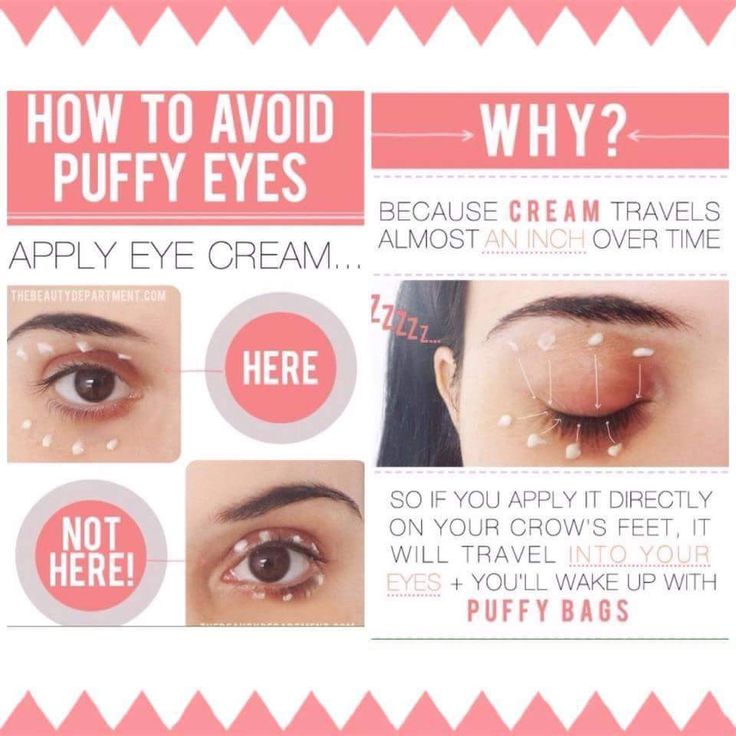 However, contact your doctor if you have:
However, contact your doctor if you have:
If you’re experiencing these symptoms, your puffy eyes could be the sign of a more serious health condition, such as:
You may notice puffy eyes as you age or for a number of temporary reasons, such as lack of sleep, poor diet, or seasonal allergies. Adopting healthy lifestyle habits may improve your puffy eyes in just a short time.
If you experience chronic eye puffiness, talk to your doctor about treatment options, like cosmetic surgery. In some instances, puffy eyes may be the sign of a more serious condition. Consult your doctor if you suspect your puffy eyes may be a sign of something else.
Contents:
➦What are the main causes of puffy eyes and panda effect?
➦ Why do my eyes swell when I wake up?
➦Quick relief from puffiness under the eyes
➦Professional and drugstore products
➦Unable to remove puffiness? Hide her!
➦Does puffy eyes mean I have some kind of disease?
➦How to treat puffy eyes
➦The main thing is not to be discouraged, the puffiness will definitely pass!
Our sympathetic nervous system reacts quite quickly to excessive stress. In an effort to protect us from the pathogen and perform an emotional reset in response to any strong adrenaline rush, it irritates the tear ducts inside the eye. An irritated canal provokes a copious release of tears, as well as redness of the face and swelling. Gradually, the heart rate returns to normal, the level of adrenaline decreases, but the puffiness from the eyes does not go away so easily. It turns out that swelling is caused by excessive tension of the channel, and you yourself provoke it by trying to wipe your eyes from tears with your hands or any other means at hand.
It turns out that swelling is caused by excessive tension of the channel, and you yourself provoke it by trying to wipe your eyes from tears with your hands or any other means at hand.
Tears are not the main cause of puffy eyes, but they provoke an excessive accumulation of fluid in the tissues of the skin. Since the skin around the eyes is very thin, when they swell, they form swellings that become visually noticeable. But why does fluid accumulate at all, forming a swelling of the eye?
Swollen eyes usually result from a variety of factors, including:
✦ Fluid retention
✦ Allergic reaction in the form of hay fever
✦ Problems with nasal sinuses and runny nose
✦ dehydration
✦ Fatigue and lack of sleep
✦ stress
✦ A large number of tears
✦ ATTRICTION
✦ Inherited facial features
Unfortunately, many people suffer from puffiness around the eyes due to hereditary factors that are inherent in their face type.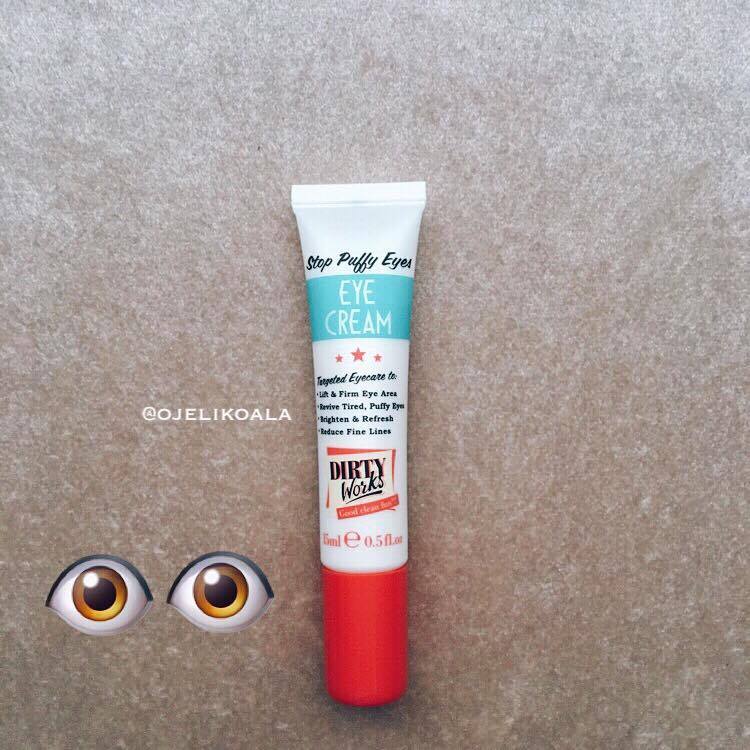 Swelling under the eyes can be the result of age-related changes in adipose tissue. It is usually located around the bony part of the orbit and protects the eyeball from damage. With age, it begins to move forward and fill the spaces under the eye. These changes can only be stopped surgically or by a cosmetologist using special injections.
Swelling under the eyes can be the result of age-related changes in adipose tissue. It is usually located around the bony part of the orbit and protects the eyeball from damage. With age, it begins to move forward and fill the spaces under the eye. These changes can only be stopped surgically or by a cosmetologist using special injections.
This process is almost inevitable, but at a certain age you can influence it with the help of cosmetics and procedures. It occurs due to tissue aging and thinning of the membranes that hold fatty deposits that accumulate on the upper and lower eyelids. As the membrane becomes thinner, the fat expands and moves forward. This causes puffy eyes, dark circles and bags under the eyes.
For some, this fact may be surprising, but during sleep we do not blink. Our eyes are tightly closed and under the eyelids there is a chaotic movement of the eyeball. Unfortunately, some people may develop puffy eyes after prolonged sleep. The process of blinking is very similar to walking or playing sports. When you are not moving, your limbs may swell, which causes significant discomfort. As soon as you begin to make movements, the fluid in the body accelerates and is distributed evenly throughout it, so the swelling goes away. A similar action occurs with the centuries.
The process of blinking is very similar to walking or playing sports. When you are not moving, your limbs may swell, which causes significant discomfort. As soon as you begin to make movements, the fluid in the body accelerates and is distributed evenly throughout it, so the swelling goes away. A similar action occurs with the centuries.
Being in a closed position during sleep and not moving the eyelids can potentially swell in some people who are prone to this problem. So you may wake up in the morning with unusually swollen eyelids. When you wake up and start blinking, some of the puffiness will gradually go away. Dark circles under the eyes can form due to stress or lack of sleep.
There are too many reasons that cause us to cry, and to keep them in ourselves is not only harmful, but it also does not always work out. What to do if, after uncontrollable sobbing, you urgently need an important event? Or did you wake up in the morning with puffiness under your eyes, and two hours later you have to go to work and have an important meeting? There is an exit.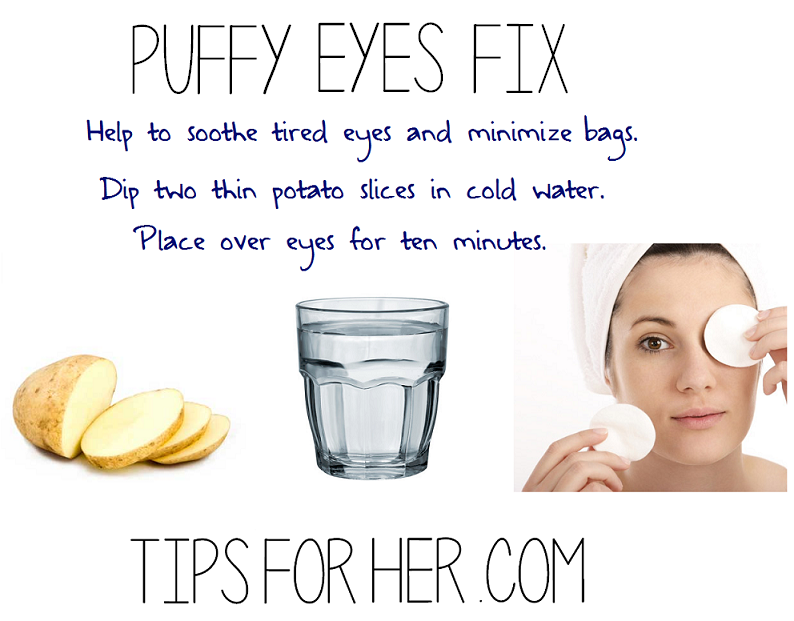
Lightly tap or massage the area to stimulate blood flow
You can increase blood flow to the affected area by gently tapping or massaging around the eyes:
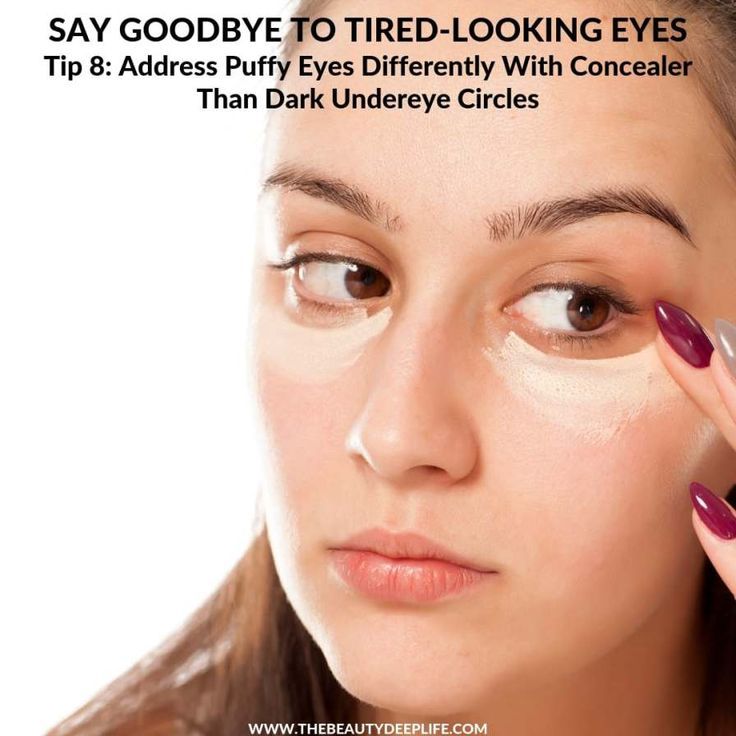 This helps drain the inflamed area.
This helps drain the inflamed area.
More in Eye Care
Some brands of professional cosmetics produce special eye creams, one of the effects of which is to relieve fatigue and eliminate puffiness. You can pick up such products in the Fitomarket "Face Care" section of the online store. Regular intake of vitamin E will help restore skin elasticity, smooth wrinkles and get rid of swelling in the eye area.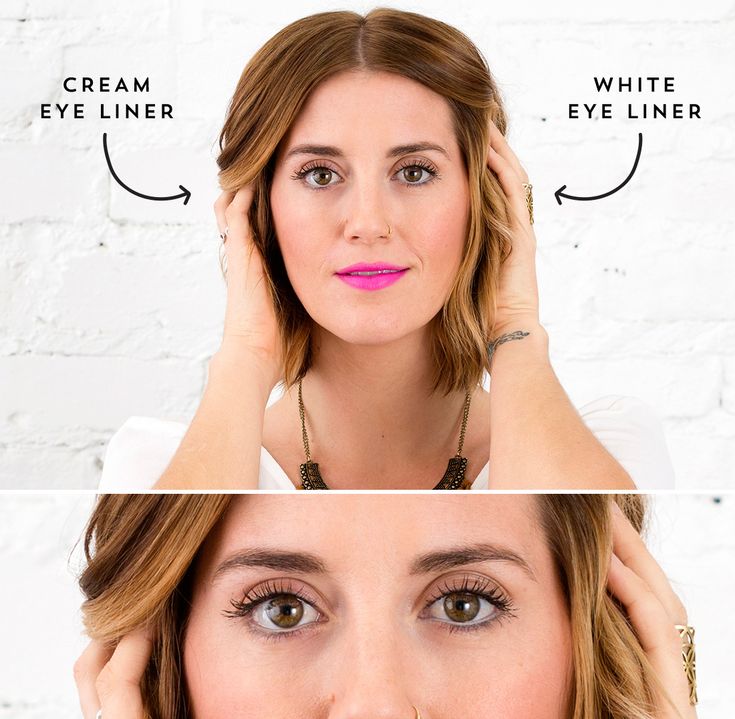 In addition, you can try massage and various types of eye exercises. They will improve blood circulation and can speed up the process of eliminating edema.
In addition, you can try massage and various types of eye exercises. They will improve blood circulation and can speed up the process of eliminating edema.
Eye drops are another way to reduce puffiness in the eyelids. They can be used to relieve any symptoms, from dryness to replenish natural tearing. There are also vasoconstrictors that can help with the redness that invariably comes with crying or allergies. To avoid further irritation, try choosing preservative-free solutions containing fewer synthetic additives. Most formulas are not recommended for contact lens wearers, so read labels carefully and consider removing lenses before use.
If you happen to have witch hazel lying around in your first aid kit. Then you should know that this astringent is great for inflammation and redness. This is a good choice of natural ingredient to combat puffy eyes. For a quick result, apply witch hazel to a cotton pad and apply it to the eye area for 5-10 minutes.
Among professional skin care products, patches under the eyes are considered a panacea in this matter. Thanks to natural extracts of green tea, aloe juice or other additives, they improve blood microcirculation, relieve inflammation and puffiness. Be sure to make sure that the package with patches indicates the presence of a draining effect, which is responsible for removing swelling from the eyes.
Thanks to natural extracts of green tea, aloe juice or other additives, they improve blood microcirculation, relieve inflammation and puffiness. Be sure to make sure that the package with patches indicates the presence of a draining effect, which is responsible for removing swelling from the eyes.
Again, cooling the eye area soothes the skin, stimulates the lymphatic system and constricts the blood vessels. Try chilling your favorite face cream or eye patch before applying. Then the effect will be stronger, and you will feel a pleasant coolness during the procedure.
The skin under the eyes may swell or darken after crying. Possible consequences of a tantrum are also redness around the nose or other spots on the face. A good concealer will help mask these obvious signs and give you a fresh look through color correction.
Look for a green concealer that will successfully neutralize redness. Green is the opposite of red on the color wheel, causing the two colors to cancel each other out. You can apply the concealer to the affected areas and blend well with your fingers or a cosmetic blender.
You can apply the concealer to the affected areas and blend well with your fingers or a cosmetic blender.
Another distraction that can help hide puffiness is dark blue eyeliner. It has long been used to emphasize the whiteness of proteins. Narrowline is a technique that is similar to waterline tracking. It is sometimes referred to as "invisible eyeliner" because it mimics the natural dark area on the lash line.
You can also use pink eye shadow or blush. Pink color elsewhere on the face can reduce redness around the eyes and nose. To do this, try applying blush on your cheeks and bright lipstick on your lips. Apply blush to the cheek area after applying concealer and foundation.
If your eyelids have never been swollen before, and now you notice swelling that has arisen for no apparent reason, this may be a sign of a serious health problem. For example, patients with hypo- and hyperthyroidism may suffer from a general swelling of tissues and muscles.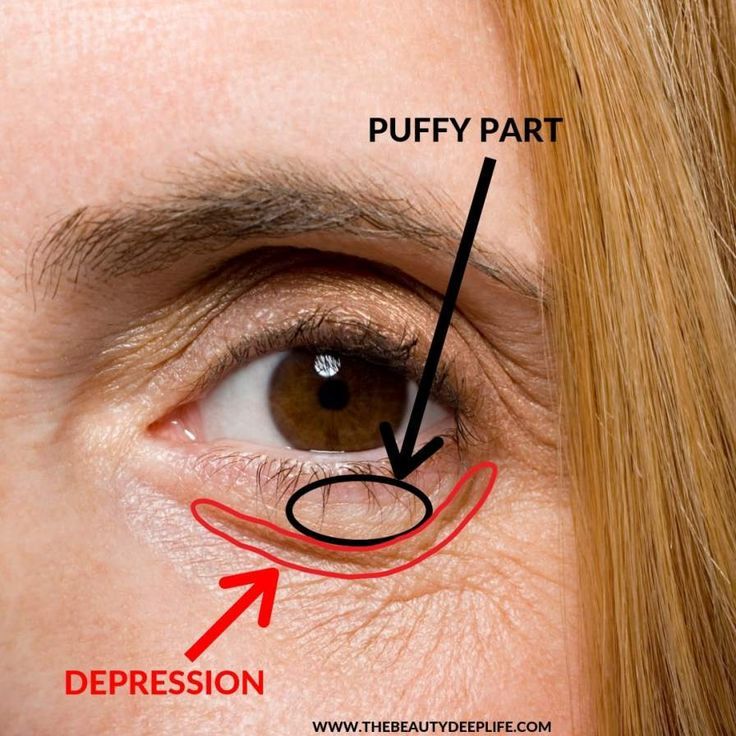 In addition, bulging eyes can signal a serious thyroid condition known as Graves' disease.
In addition, bulging eyes can signal a serious thyroid condition known as Graves' disease.
One of the symptoms of an allergy may be watery eyes, itching and swelling. Typically, such reactions occur on certain foods or chemicals. Allergies have a wide range of symptoms, including a runny nose, cough, and shortness of breath. During an allergic reaction, certain cells in the body release a chemical called histamine. Which can provoke an outflow of fluids from the blood vessels, which will lead to swelling of the surrounding tissues, including the appearance of bags under the eyes.
Puffy eyelids and dark circles under the eyes can occur if you have an eye infection such as conjunctivitis. In some cases, inflammation due to dry eye syndrome also causes swelling. Kidney failure and other systemic diseases can cause swelling throughout the body, including around the eyes.
If your eyelids are painful or sensitive to the touch, the cause is most likely an infection, cyst, or stye.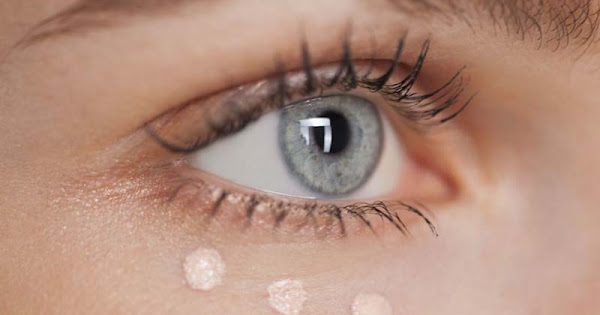 It is important to determine the cause of a swollen eyelid, as treatment options depend on what is causing it.
It is important to determine the cause of a swollen eyelid, as treatment options depend on what is causing it.
✅ Cyst
If your upper or lower eyelid is swollen, it could be a cyst or a chalazion. The chalazion usually swells in the middle part of the eyelid. These cysts may disappear within a few weeks and some will turn into a hard lump.
Treatment: for relief, press a damp, heated cloth, heating pad, or boiled egg against the eye. Heat helps with oil secretion and blockage of blood vessels and skin. You can do this four to five times a day. If the cyst persists, see your doctor.
✅ Barley
Styes are formed due to an infection at the base of the eyelid near the eyelashes. It can be internal or external, but often appears as a well-defined red bump. Once the pus comes out of the stye, your eye will usually get better.
Treatment: A warm compress can be used to facilitate and speed up healing. It usually goes away after a few weeks. Avoid wearing makeup during a stye as this can cause reinfection.
Avoid wearing makeup during a stye as this can cause reinfection.
✅Conjunctivitis
Pink eye is caused by a bacterial, viral or allergic infection that causes inflammation on the surface of the eye. It can start in one eye and spread to both. Often, pus or sticky deposits appear on the eyelashes and in the corners of the eyes.
Treatment: you can clean sticky and crusty eyelids with warm water and cotton. The eye may heal on its own without treatment. Avoid touching your eyes during this time and keep your pillowcases clean. Avoid eye makeup and contact lenses.
These methods will help relieve the symptoms that occur after a prolonged tantrum, accompanied by sobbing. They can also help to recognize other causes of puffy eyes and distinguish between heavy tears and a serious condition. In addition to controlling the outward signs of a tantrum, it is important to understand that self-care and love are important during times of sadness or stress.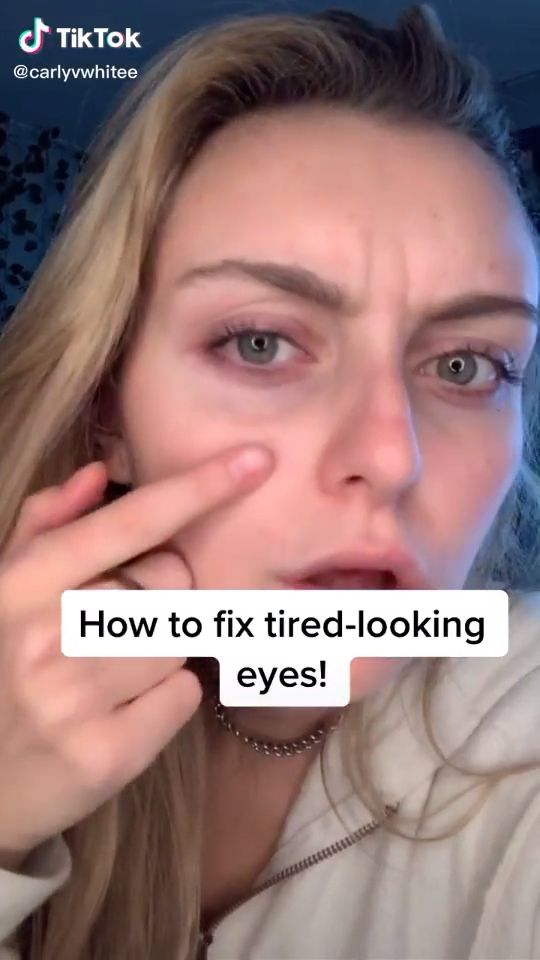 Set aside time for yourself every day, even if it's just a few minutes.
Set aside time for yourself every day, even if it's just a few minutes.
Better yet, express your thoughts or simply relax with a close friend or family member. Another good option is a professional therapist. They can help you sort out your feelings and prescribe medication if needed. Just remember that you don't have to go through what you will face alone.
Tears are a natural emotional reaction to feelings, most often to sadness and pain. The sympathetic nervous system reacts to the release of adrenaline in the following way:
irritation of the lacrimal canals occurs;
increased heart rate;
blood rushes to the face, and it becomes red, and the eyes become swollen (by the way, in the same way, the eyes can react to improper care, to understand what you are doing right and what is not, take our test).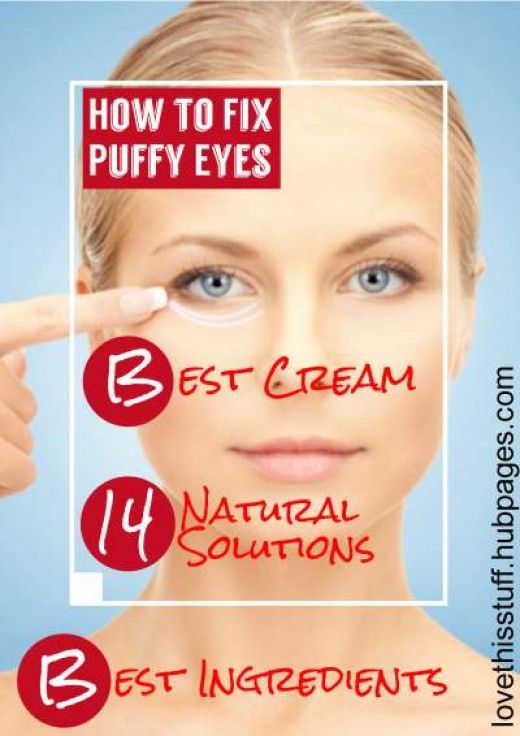
© Getty Images
Pass test
And even if you quickly pull yourself together, get distracted, the "mirror of the soul" will give out feelings for a long time - redness and swelling will not go away soon. How to quickly remove unpleasant consequences?
Back to the top
The first thing to do is to open the window and take 10 deep breaths. It will get easier right away! And then wash with cold water. It will help to calm down, remove the feeling that the face is on fire. You can take a couple of ice cubes and wipe your face with them to relieve puffiness and redness.
Back to the table of contents
If your eyes still look tear-filled and you need to go out in a hurry, thoughtful makeup will help. You will need a green corrector (it visually conceals redness), a primer and foundation. A good idea is to draw attention away from the eyes by brightening up the lips. If you have at least half an hour to put yourself in order, remove the patches from the refrigerator or make a compress.
You will need a green corrector (it visually conceals redness), a primer and foundation. A good idea is to draw attention away from the eyes by brightening up the lips. If you have at least half an hour to put yourself in order, remove the patches from the refrigerator or make a compress.
First aid for teary eyes - patches with caffeine or green tea extract. Soothing masks will also help - with hyaluronic acid, aloe, chamomile, coconut milk. You can try out of turn to use your usual eye cream if it has an anti-puffiness effect. The editors of Skin.ru have compiled their own rating of cosmetics that help put your eyes in order after tears.
“Moisturizing + fresh look” fabric patches under the eyes In “peacetime” these patches successfully fight bags and dark circles under the eyes, but, as personal experience shows, tearful eyes after their application are also quickly restored . The effective formula includes hyaluronic acid and orange juice. Want to get a more noticeable cooling effect? Keep patches in the refrigerator before use. And apply exactly for 15 minutes, as directed on the package.
Want to get a more noticeable cooling effect? Keep patches in the refrigerator before use. And apply exactly for 15 minutes, as directed on the package.
Skin Naturals, Garnier
These patches are also applied for 15 minutes - you don't have to lie down, you can walk, run, jump, do household chores. While you are doing all this, the mask works: coconut water and hyaluronic acid, along with other components, moisturize, refresh the skin, remove signs of fatigue and dark circles under the eyes.
Very gentle on dark circles and bags under the eyes. The formula with ceramides, vitamin E, glycerin and hyaluronic acid moisturizes the skin around the eyes, the skin around the eyes looks less tired.
An excellent tool if you need to quickly clean up and hide signs of fatigue or tears. Cream with proxylan, vitamin C and blueberry extract instantly transforms the skin. If you use it constantly, wrinkles become smaller, dark circles under the eyes are reduced.
A toning effect is just what you need to quickly hide the traces of stress and reduce bags under the eyes.
This product seems to be specially designed for Princess Nesmeyana. The balm has a cooling effect, visually reduces dark circles and puffiness under the eyes, fights signs of fatigue.
Men also cry, and there is nothing to be ashamed of. Light gel will refresh and cool the skin, visually reduce dark circles and swelling. By the way, there are no contraindications for women either.
Instantly cools and hydrates the skin. Wrinkles, dark circles and bags under the eyes become less noticeable.
It happens that patches and creams are not at hand. In this case, you can try lotions with available funds.
With milk
It's very simple: dip two cotton pads (or wipes) in cold milk and apply to closed eyelids for 7-10 minutes. This mask will quickly relieve swelling and redness.
With olive oil and rosemary
You need a teaspoon of oil and a drop of rosemary oil. The mixture should be applied to the eyelids and the area under the eyes, but in such a way that in no case does it get on the mucous membranes.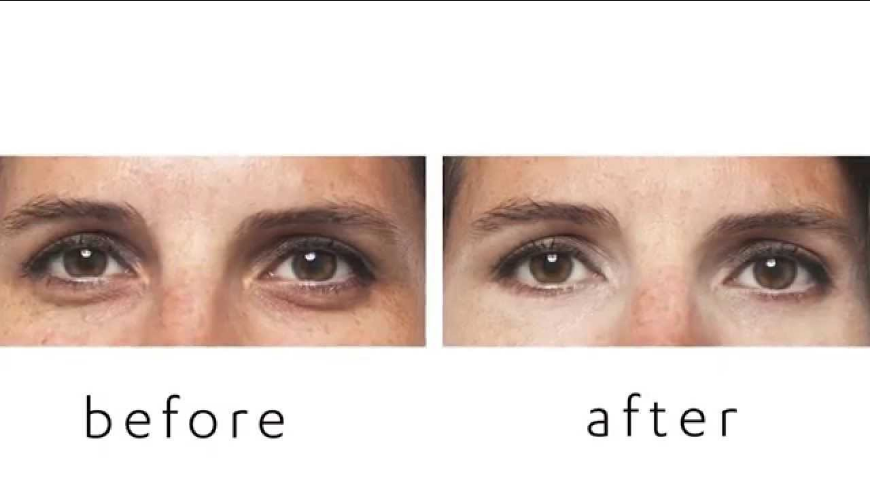 Otherwise, the situation will get worse! After a minute, you need to remove excess oil with a napkin - puffiness is gone!
Otherwise, the situation will get worse! After a minute, you need to remove excess oil with a napkin - puffiness is gone!
With potatoes
Grate a small potato, squeeze out excess liquid and transfer the gruel to two gauze bags. Apply them to closed eyelids for 10-15 minutes, and then wash with cool water.
With cucumber
The simplest procedure to save from the effect of tearful eyes is to apply a cool circle on closed eyelids, sit, or better lie down for 10-15 minutes - well, who was crying here?
With tea
Cooled tea bags will help just as well as cucumbers. They, too, just need to be applied to closed eyelids and lie down for 10-15 minutes.
If you don't have your favorite cream at hand, you can try making cucumber lotions. © Getty Images
Simple eye exercises can also help get rid of puffiness.
Lower your eyes down, move your index finger along the eyelashes from the inside of the eyelid to the outside. Then lift your eyes up and repeat the same procedure with the lower eyelid, but move in the opposite direction. You do not need to press, the movements should be light, smooth. Repeat the exercise 10-15 times.
Then lift your eyes up and repeat the same procedure with the lower eyelid, but move in the opposite direction. You do not need to press, the movements should be light, smooth. Repeat the exercise 10-15 times.
With very light circular motions, massage the upper and then the lower eyelid along the lashes. Move from the inside of the eye to the outside.
Cream, corrector, gymnastics, compresses - in order to remove swelling from the eyes after tears, all means are good. © Getty Images
0003
Drink less water, tea, etc. before going to bed: any liquid will contribute to swelling. But the morning must definitely start with a glass of water.
You should not eat salty, smoked and sweet at night (although there will be a great temptation to seize the problem and sad thoughts with something harmful and tasty). These foods retain water in the body.